Dry air. It can irritate your sinus passages and exacerbate pre-existing respiratory conditions. Air that lacks the proper percentage of moisture also has a propensity to damage furnishings and do a number on a home’s structural components.
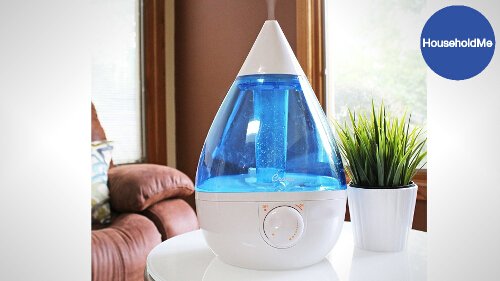
If you scour the internet, you can find multiple quick fixes for dry indoor air. Some suggestions include placing well-watered plants throughout your house and leaving the bathroom door open when you take a shower. However, none of these ideas are viable for maintaining long-lasting humidity. To get dependable air moisture, you need a warm-mist or cool-mist humidifier.
What a Humidifier Can Do for You
If you have a humidifier running on a regular basis in your bedroom or home office, moisturized mist or vapor is released into the surrounding air. In turn, the humidity of the entire room can reach and stay at a healthy level.
With the help of a humidifier, you can heal from respiratory illnesses faster and make their accompanying symptoms milder because the mist soothes nasal passages and loosens lung congestion. A humidifier is also a life-saver for those who suffer from asthma, allergies or chronic bronchitis. Plus, a healthy indoor relative humidity protects your furniture and personal belongings, particularly those made of wood.

How a Cool-Mist Humidifier Works
There are several kinds of cool-mist humidifiers from which you can choose. All of them are equipped with a mist-dispersing nozzle and a refillable water tank, and they release streams of cool or room-temperature mist throughout a certain number of square feet.
Some of these appliances generate ultrasonic vibrations with a ceramic diaphragm while others soak up water with an absorbent wick. Each type of cool-mist humidifier works as efficiently as the other; there are just differences in how they operate and the benefits they offer.
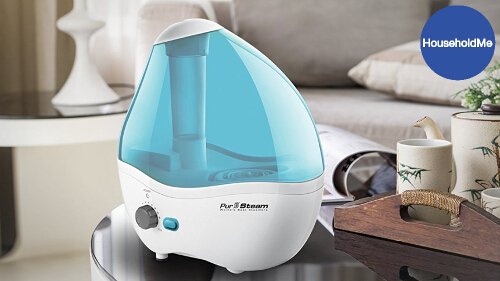
Types of Cool-Mist Humidifiers
There are two varieties of cool-mist humidifiers. One kind is called an evaporative humidifier. This type of humidifier contains a wick that absorbs the water in the tank and a fan that blows air across the wick, creating a fine mist. The wick also traps impurities, so you can safely use tap water. Generally, evaporative humidifiers are best-suited for large rooms.
Another type is an ultrasonic humidifier. This kind of humidifier has an inlet valve that moves the water, and it makes ultrasonic vibrations to produce this mist. With an ultrasonic humidifier, distilled water is recommended to ensure clean mist and prevent mineral dust buildup. Overall, ultrasonic humidifiers are quieter and more energy efficient than their evaporative counterparts because they don’t have a fan; however, they tend to work better in small and average-size rooms.
How a Warm-Mist Humidifier Works
Like cool-mist humidifiers, warm-mist humidifiers also have a reservoir and a nozzle. In addition to these parts, they have a heating element that boils the water inside of the reservoir, putting warm steam in the air. There are even some warm-mist humidifiers that are designed to release medicated vapor.
Since the water is boiled, the majority of bacteria and mold that lurk in the water supply are destroyed. These humidifiers are ideal for small areas, and they are relatively quiet in comparison to some types of cool-mist humidifiers.
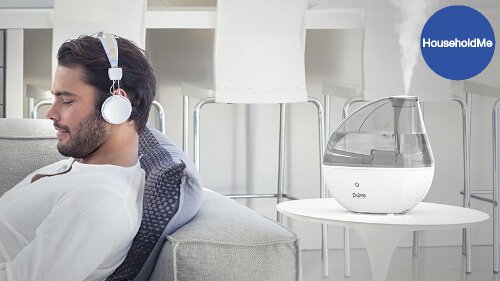
Types of Warm-Mist Humidifiers
Like cool-mist humidifiers, there are two common types of warm-mist humidifiers used in homes. One of these is a traditional warm-mist humidifier. Traditional warm-mist humidifiers boil the water in the tank to produce warm, soothing mist.
The other kind of warm-mist humidifier is known as a vaporizer. Although vaporizers have a reservoir, heating element and nozzle, they have the added benefit of being compatible with liquid inhalants. Vaporizers are equipped with a designated drawer or dispenser for the liquid inhalant. When the humidifier mixes the inhalant in with the steam, the medicated vapor is released within the humidifier’s warm-mist emissions.
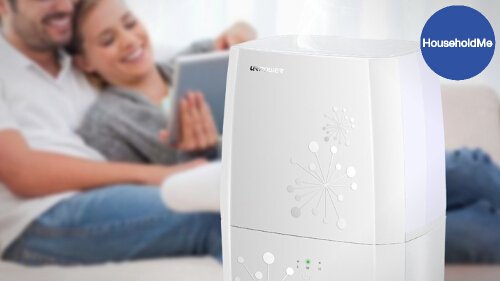
Pros of Cool-Mist Humidifiers
Warm-mist and cool-mist humidifiers each have a unique set of advantage and disadvantages. Cool-mist humidifiers use less electricity than warm-mist humidifiers because they don’t contain a heating element. Since they only produce cool mist, they are great to use in the warm summertime months.
In addition, cool-mist humidifiers are safer to use around young children and pets. If the humidifier gets knocked over, nobody will get scalded by the water.
Cons of Cool-Mist Humidifiers
Of course, there are a few downsides to cool-mist humidifiers. For instance, evaporative humidifiers make more noise than warm-mist humidifiers. Babies and people who are noise sensitive will rest easier with an ultrasonic or warm-mist humidifier. Evaporative humidifiers also need their wick replaced regularly to keep the mist clean.
Ultrasonic cool-mist humidifiers don’t require a filter. However, they can produce mineral powder, which looks like white dust. After running an ultrasonic humidifier for a while, the dust will settle on nearby surfaces if tap water is used. Of course, this issue is avoidable if you stick with distilled water. Distilled water is a negligible yet extra expense.
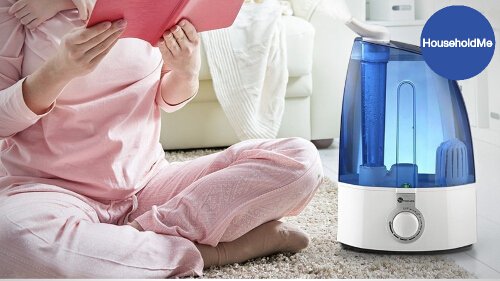
Pros of Warm-Mist Humidifiers
There are many points that favor warm-mist humidifiers. They have the ability to kill bacteria on contact when they’re in operation due to the high temperate of the water, which reaches 212 degrees Fahrenheit or hotter. Thanks to their warm-mist emissions, they are perfect to use during chilly winter days and nights.
Warm-mist humidifiers also saturate the air with moisture faster than cool-mist humidifiers, meaning the humidity level in the room rises in a shorter amount of time. If you have a cold or the flu, you benefit from the liquid inhalant you can put in a vaporizer. Many warm-mist humidifiers don’t need a filter, and their steam contains fewer minerals than cool-mist humidifiers.
Cons of Warm-Mist Humidifiers
Between cool-mist and warm-mist humidifiers, warm-mist humidifiers use the most electricity. While you may not notice much of a difference in your bill, the need for more electricity may result in slightly higher electricity costs.
There is also a downside to the safety of warm-mist humidifiers. Unlike cool-mist humidifiers, warm-mist humidifiers carry a burn risk to curious children who put their face directly in front of the warm steam that comes out of the nozzle. These humidifiers can also scald the skin if the water is spilled when someone moves it.
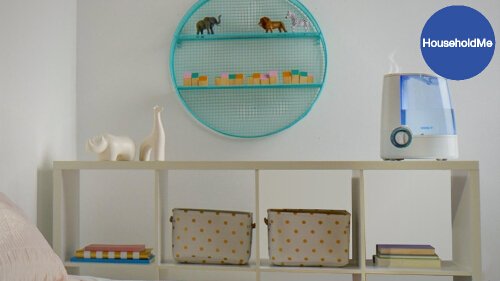
When to Use Cool Mist
There are certain situations when a cool-mist humidifier may be preferable to a warm-mist humidifier. If you have children or need to humidify the air in an infant’s room, a cool-mist humidifier is safer. If you plan to put a humidifier in a large room or open space, a cool-mist humidifier is able to cover bigger areas.
Warm days call for these kinds of humidifiers because the cool mist they release slightly lowers the temperature of the room in which they’re used. If you can’t stand the sound of white noise when you sleep, opt for a humidifier that produces cool mist via ultrasonic vibrations.
When to Use Warm Mist
In some cases, you may want a warm-mist humidifier instead. If it’s a cold day outside, the steam generated by the humidifier can elevate the room’s temperature. Even though warm-mist humidifiers don’t have the coverage ability of cool-mist humidifiers, warm-mist humidifiers are the way to go if you need the air moisturized quickly.
If you are sick and need a liquid inhalant to relieve your persistent cough, only a warm-mist humidifier can offer this benefit. If you don’t want to deal with changing a filter or buy jugs of distilled water, you can save time and money by using a warm-mist humidifier.
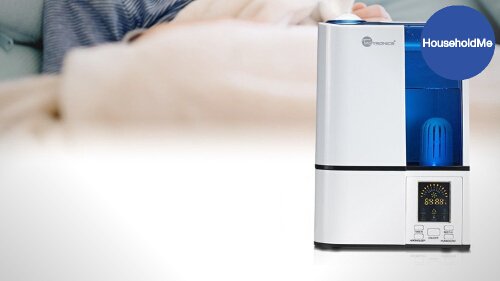
When You Can’t Decide Between a Warm-Mist and a Cool-Mist Humidifier
Choosing between a warm-mist and a cool-mist humidifier isn’t always cut-and-dry. If you can’t make a definitive decision, there are some humidifiers that do both, so you can get warm-mist when you need it and cool-mist when you don’t.
Dual-temperature humidifiers are the ideal choice if you want year-round humidification. Most have an easy-to-navigate control panel, and many models are equipped with advanced features like a timer, antibacterial material, and a humidistat.
Maintaining a Humidifier
Whether you own a cool-mist or warm-mist humidifier, you’ll need to keep it in working order. This means the tank should be empty when the humidifier isn’t in use to prevent bacterial buildup caused by stagnating water. Otherwise, you risk the humidifier putting germs into the air you breathe.
You should also change the filter, wick or cartridge per the manufacturer’s instructions if your humidifier has any of these parts. Make sure to clean the humidifier once per week and wipe down the interior of the tank on a daily basis. If the humidifier doesn’t take liquid inhalants or essential oils, refrain from using them as they can break down plastic components in the humidifier.
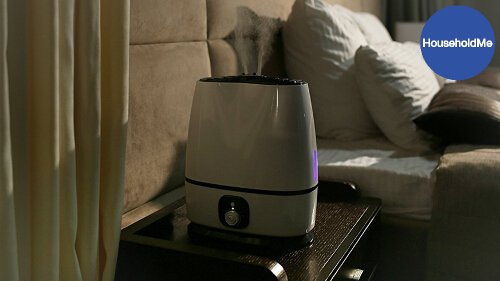
Safety Tips for Humidifier Use
Humidifiers contain safeguards like an auto-shutoff mechanism; however, there are some general safety tips everyone should follow. Choose a level surface for your humidifier, so water is less likely to get spilled, and only add water to the humidifier after you unplug the humidifier to prevent electrical shocks.
Always keep the humidifier out of your children’s reach, especially if the humidifier has a heating element, and the same safety guideline applies to the power cord. Before you put the humidifier in storage, make sure it’s completely dry.
Sources
MedlinePlus
United States | Consumer Product Safety Commission
Mayo Clinic

If you have any questions or comments, please add them below in the comment section. Similarly, please let us know if you spot any mistakes or omissions. Thanks!
